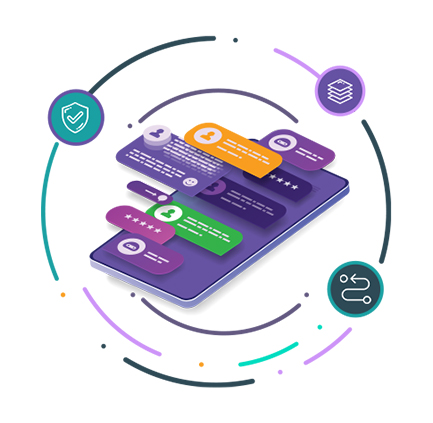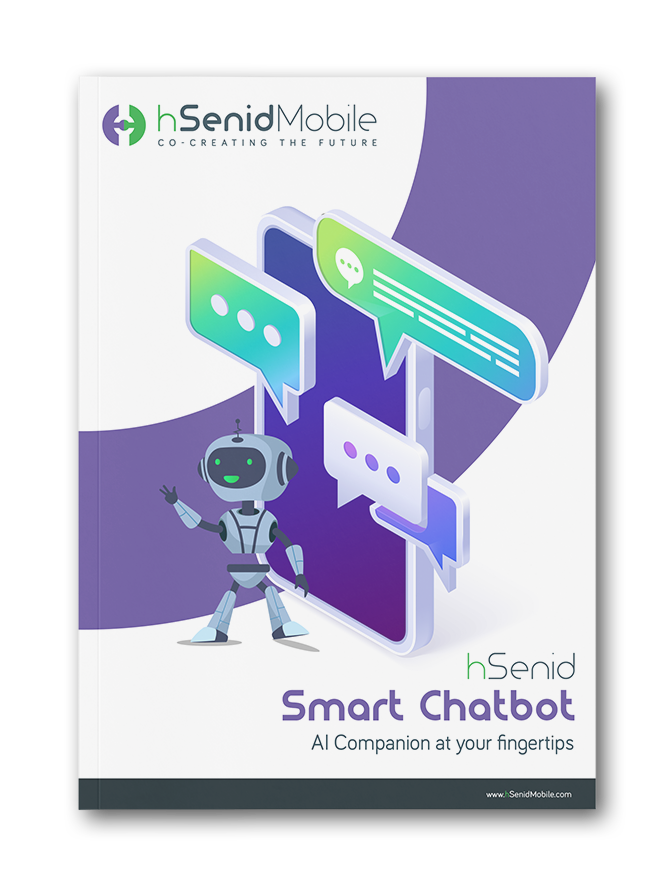In an era where businesses compete on customer experience, nothing is more frustrating for a user
than hearing the dreaded words: “Sorry, I don’t understand.” These four words have become the
anthem of failed automation, signaling that a chatbot is struggling, customers are annoyed, and
companies are losing opportunities.
Chatbots were once hailed as the future of customer interaction. They promised 24/7 availability, instant replies, and cost-efficient support. Yet, despite billions of dollars invested, too many chatbots still fail at their most basic mission: understanding the customer. Why is this happening, and what can businesses do about it?
The answer lies not in abandoning automation, but in embracing a smart chatbot strategy that blends technology, empathy, and foresight. Let’s explore why traditional bots fall short, how the landscape is changing, and what companies must do to ensure their chatbot delivers value instead of frustration.
Imagine this: A customer visits a telecom provider’s website late at night, desperate to fix an issue with a dropped connection. They’re greeted by a chatbot, great! Relief washes over them. But within three exchanges, the chatbot repeatedly responds with, “Sorry, I don’t understand.” The customer leaves angrier than before and vows to switch providers the next day.
This isn’t an isolated incident. Gartner has reported that by 2027, chatbots will be the primary customer service channel for 25% of organizations. Yet, customer satisfaction rates with these bots remain far below expectations. According to a survey by Userlike, 60% of users have had frustrating experiences with chatbots, often tied to poor understanding and a lack of personalization.
The gap between expectation and reality is where businesses lose loyalty. Customers expect instant, human-like conversations, but too often they receive rigid, scripted replies. What should have been a digital advantage becomes a barrier to trust.
Fortunately, chatbot technology is evolving. The next generation of automation isn’t about simple keyword-matching bots; it’s about smart chatbots that use natural language processing (NLP), sentiment analysis, and machine learning to actually understand context.
Instead of treating conversations like a Q&A script, smart chatbots recognize intent, pick up on nuances, and escalate to human agents when needed. The difference is night and day. A simple bot might stumble when a customer says:
“My payment didn’t go through yesterday but the receipt shows a charge.”
A smart chatbot, however, understands this is a billing problem tied to a failed transaction, pulls relevant account data, and suggests the next best step. If unresolved, it can seamlessly hand the case to a human agent, without forcing the customer to repeat themselves.
The trend is clear: businesses that invest in smarter automation will thrive. Those who rely on outdated scripts will watch their customers walk away.
Take the example of a global e-commerce retailer that introduced a chatbot to handle returns. On paper, it looked promising: fast resolution, reduced agent workload, and happier customers.
In practice? The chatbot only recognized keywords like “return” or “refund.” Customers who wrote, “The shoes didn’t fit, I want to send them back,” were met with confusion. The bot failed to connect that “send back” also meant “return.” Worse, when frustrated customers asked for human help, the bot looped back with the same “Sorry, I don’t understand” message.
The fallout was immediate. Customer satisfaction dropped by 20%, return processing times increased, and call center traffic spiked because people no longer trusted the chatbot.
The lesson is simple: deploying a chatbot isn’t enough. Deploying a smart chatbot that can learn synonyms, understand intent, and adapt to real human language is what truly changes the game.
So why do so many bots fail? Here are the most common pitfalls:
The key is not to abandon chatbots but to make them intelligent partners in customer engagement. A smart chatbot addresses the above failures by combining advanced AI with thoughtful design.
Here’s what sets them apart:
This isn’t theory. Leading businesses are already seeing the payoff. For instance, a financial services firm reduced support call volume by 35% after implementing a smart chatbot that could handle complex billing questions without agent involvement.
To understand the problem better, let’s look at how chatbots fail differently across industries:
It’s easy to see the annoyance bad chatbots cause. But the hidden costs go deeper:
In contrast, businesses that deploy effective smart chatbots save on support costs, increase customer satisfaction, and strengthen loyalty.
Why does this phrase irritate users so much? Because it signals a lack of effort. Customers know AI is powerful, they see it in recommendation engines, voice assistants, and even self-driving cars. So when a company’s chatbot can’t handle a simple query, it feels like negligence.
Moreover, customers equate chatbot failures with a company’s overall digital maturity. If your bot can’t understand basic questions, what does that say about your ability to deliver advanced services?
The takeaway: investing in smart chatbot technology isn’t just about convenience—it’s about protecting your brand reputation.
We’re moving toward a future where bots don’t just respond—they anticipate. Imagine a smart chatbot that recognizes frustration in a customer’s tone and proactively offers a discount, or one that can book an appointment before the customer even asks.
The combination of predictive analytics, AI-driven empathy, and voice integration will make tomorrow’s bots less like tools and more like companions in the customer journey.
Businesses that ignore this trend will soon find themselves obsolete. Customers won’t wait around for “Sorry, I don’t understand” when competitors offer bots that understand them perfectly.
The phrase “Sorry, I don’t understand” is more than just a failed chatbot response; it’s a reflection of missed opportunities, lost trust, and brand vulnerability. But this future isn’t inevitable. Businesses that embrace smart chatbot technology can transform customer frustration into loyalty, reduce operational costs, and position themselves as leaders in digital innovation. It’s no longer a question of whether to use chatbots; it’s about whether yours is smart enough to matter.
Is your business still frustrating customers with outdated bots? It’s time to move beyond “Sorry, I don’t understand” and embrace the future of customer engagement. A smart chatbot can streamline support, personalize interactions, and keep your customers coming back.
Don’t let poor chatbot experiences cost you loyalty and revenue. Contact us today to explore how a smart chatbot can transform your business.
Chatbots were once hailed as the future of customer interaction. They promised 24/7 availability, instant replies, and cost-efficient support. Yet, despite billions of dollars invested, too many chatbots still fail at their most basic mission: understanding the customer. Why is this happening, and what can businesses do about it?
The answer lies not in abandoning automation, but in embracing a smart chatbot strategy that blends technology, empathy, and foresight. Let’s explore why traditional bots fall short, how the landscape is changing, and what companies must do to ensure their chatbot delivers value instead of frustration.
The Industry Problem: When Bots Become Barriers
Imagine this: A customer visits a telecom provider’s website late at night, desperate to fix an issue with a dropped connection. They’re greeted by a chatbot, great! Relief washes over them. But within three exchanges, the chatbot repeatedly responds with, “Sorry, I don’t understand.” The customer leaves angrier than before and vows to switch providers the next day.
This isn’t an isolated incident. Gartner has reported that by 2027, chatbots will be the primary customer service channel for 25% of organizations. Yet, customer satisfaction rates with these bots remain far below expectations. According to a survey by Userlike, 60% of users have had frustrating experiences with chatbots, often tied to poor understanding and a lack of personalization.
The gap between expectation and reality is where businesses lose loyalty. Customers expect instant, human-like conversations, but too often they receive rigid, scripted replies. What should have been a digital advantage becomes a barrier to trust.
Future Trends: The Rise of Smarter Conversations
Fortunately, chatbot technology is evolving. The next generation of automation isn’t about simple keyword-matching bots; it’s about smart chatbots that use natural language processing (NLP), sentiment analysis, and machine learning to actually understand context.
Instead of treating conversations like a Q&A script, smart chatbots recognize intent, pick up on nuances, and escalate to human agents when needed. The difference is night and day. A simple bot might stumble when a customer says:
“My payment didn’t go through yesterday but the receipt shows a charge.”
A smart chatbot, however, understands this is a billing problem tied to a failed transaction, pulls relevant account data, and suggests the next best step. If unresolved, it can seamlessly hand the case to a human agent, without forcing the customer to repeat themselves.
The trend is clear: businesses that invest in smarter automation will thrive. Those who rely on outdated scripts will watch their customers walk away.
Real-Life Scenario: The Retailer Who Got It Wrong
Take the example of a global e-commerce retailer that introduced a chatbot to handle returns. On paper, it looked promising: fast resolution, reduced agent workload, and happier customers.
In practice? The chatbot only recognized keywords like “return” or “refund.” Customers who wrote, “The shoes didn’t fit, I want to send them back,” were met with confusion. The bot failed to connect that “send back” also meant “return.” Worse, when frustrated customers asked for human help, the bot looped back with the same “Sorry, I don’t understand” message.
The fallout was immediate. Customer satisfaction dropped by 20%, return processing times increased, and call center traffic spiked because people no longer trusted the chatbot.
The lesson is simple: deploying a chatbot isn’t enough. Deploying a smart chatbot that can learn synonyms, understand intent, and adapt to real human language is what truly changes the game.
Why Chatbots Fail
So why do so many bots fail? Here are the most common pitfalls:
- Over-Scripting: Many chatbots rely on rigid scripts that don’t allow for natural variation. If a customer uses words outside the script, the bot breaks.
- Poor Data Training: A bot is only as good as the data it’s trained on. If it lacks exposure to real-world customer queries, it won’t know how to respond effectively.
- Ignoring Context: Bots that treat every message as isolated miss the bigger picture. For instance, if a customer says, “I was talking to support yesterday about my bill,” the bot should reference prior interactions, not restart the conversation.
- No Human Escalation: A chatbot that doesn’t know when to hand off to a human creates frustration. Customers don’t mind speaking to bots—until it feels impossible to reach a person.
- One-Size-Fits-All Approach: Every industry has unique language and needs. A banking bot must understand financial jargon, while a healthcare bot must interpret medical inquiries. Generic bots simply can’t handle this.
A Smarter Path Forward
The key is not to abandon chatbots but to make them intelligent partners in customer engagement. A smart chatbot addresses the above failures by combining advanced AI with thoughtful design.
Here’s what sets them apart:
- Natural Language Processing (NLP): A smart chatbot must understand the intent behind customer queries, not just the words. NLP allows bots to handle slang, typos, and varied phrasing.
- Personalization: They pull context from customer history to tailor replies.
- Integration with Systems: The best bots are connected to CRMs, booking platforms, payment gateways, and knowledge bases. This turns them from static responders into dynamic assistants.
- Continuous Learning: Machine learning allows bots to learn from past interactions, improve accuracy, and reduce the dreaded “Sorry, I don’t understand.”
- Seamless Human Handover: A chatbot should know its limits. The ability to transfer to an agent with full context ensures customers don’t repeat themselves.
This isn’t theory. Leading businesses are already seeing the payoff. For instance, a financial services firm reduced support call volume by 35% after implementing a smart chatbot that could handle complex billing questions without agent involvement.
Industry by Industry: Different Shades of Failure
To understand the problem better, let’s look at how chatbots fail differently across industries:
- Telecoms: Customers often ask about billing, data usage, or network outages. Bots that can’t interpret these technical requests end up escalating everything to agents, defeating the purpose.
- Retail: With thousands of product variations, bots that don’t understand synonyms (“jacket” vs. “coat”) frustrate shoppers and increase cart abandonment.
- Healthcare: Accuracy is everything. If a bot misunderstands symptoms or fails to guide patients properly, it risks not just bad experiences but also compliance issues.
- Banking: Security and trust matter. Bots that respond poorly to queries about fraud alerts or transfers quickly erode confidence.
The Hidden Cost of Bad Bots
It’s easy to see the annoyance bad chatbots cause. But the hidden costs go deeper:
- Lost Revenue: A failed chatbot experience often means a lost sale. According to PwC, 32% of customers will stop doing business with a brand they love after a single bad experience.
- Agent Burnout: Poorly designed bots dump more work on agents, who must deal with angry customers and repeat issues.
- Brand Damage: Customers don’t separate “the chatbot” from “the company.” Every failure chips away at brand trust.
In contrast, businesses that deploy effective smart chatbots save on support costs, increase customer satisfaction, and strengthen loyalty.
The Psychology Behind “Sorry, I Don’t Understand”
Why does this phrase irritate users so much? Because it signals a lack of effort. Customers know AI is powerful, they see it in recommendation engines, voice assistants, and even self-driving cars. So when a company’s chatbot can’t handle a simple query, it feels like negligence.
Moreover, customers equate chatbot failures with a company’s overall digital maturity. If your bot can’t understand basic questions, what does that say about your ability to deliver advanced services?
The takeaway: investing in smart chatbot technology isn’t just about convenience—it’s about protecting your brand reputation.
Best Practices to Build a Smart Chatbot That Doesn’t Fail
- Start with Real Conversations: Train your chatbot on real transcripts from your support team. This ensures it learns natural customer language, not just scripted prompts.
- Prioritize Intent Over Keywords: Use AI-driven intent recognition so the bot can handle varied expressions of the same request.
- Design for Escalation: Build seamless pathways to human agents when needed. Customers appreciate honesty over robotic repetition.
- Measure and Iterate: Monitor performance metrics like resolution rate, customer satisfaction, and escalation percentage. Continuously retrain the bot.
- Personalize the Experience: Integrate with CRM systems so the bot knows who the customer is, what they’ve purchased, and their past issues.
- Stay Industry-Specific: Customize your chatbot’s vocabulary and workflows based on your sector’s needs.
Looking Ahead: The Future of Conversational AI
We’re moving toward a future where bots don’t just respond—they anticipate. Imagine a smart chatbot that recognizes frustration in a customer’s tone and proactively offers a discount, or one that can book an appointment before the customer even asks.
The combination of predictive analytics, AI-driven empathy, and voice integration will make tomorrow’s bots less like tools and more like companions in the customer journey.
Businesses that ignore this trend will soon find themselves obsolete. Customers won’t wait around for “Sorry, I don’t understand” when competitors offer bots that understand them perfectly.
Conclusion
The phrase “Sorry, I don’t understand” is more than just a failed chatbot response; it’s a reflection of missed opportunities, lost trust, and brand vulnerability. But this future isn’t inevitable. Businesses that embrace smart chatbot technology can transform customer frustration into loyalty, reduce operational costs, and position themselves as leaders in digital innovation. It’s no longer a question of whether to use chatbots; it’s about whether yours is smart enough to matter.
Is your business still frustrating customers with outdated bots? It’s time to move beyond “Sorry, I don’t understand” and embrace the future of customer engagement. A smart chatbot can streamline support, personalize interactions, and keep your customers coming back.
Don’t let poor chatbot experiences cost you loyalty and revenue. Contact us today to explore how a smart chatbot can transform your business.








